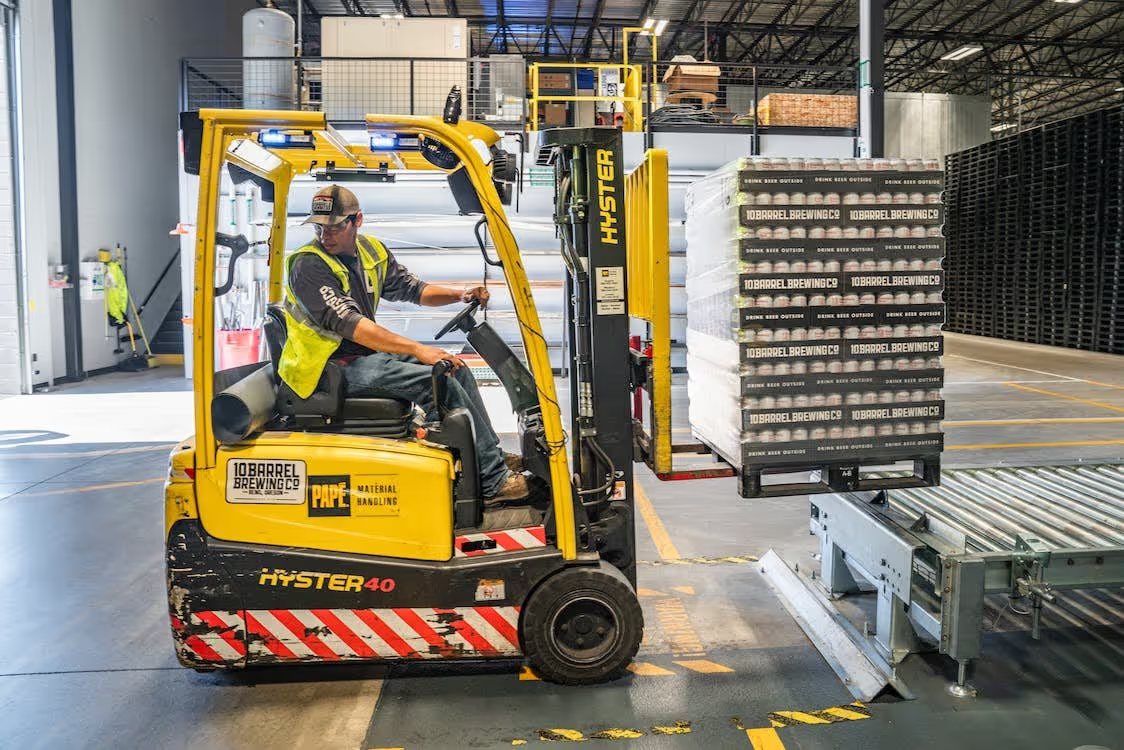How to manage virtual event productions in 2024

In recent years, the events landscape has faced a large transformation, with virtual events becoming a large player in the field. As a virtual event producer, it's important to stay ahead of your game and know all the ins and outs of virtual event management. Use our virtual event production guide and take your digital events to the next level.
1. Understanding virtual event planning process production
2. Step-by-Step Guide to virtual event production
3. Strategies for boosting attendance for an event
What is virtual event production?
A definition of virtual events
First, let's define virtual events. We're talking about digital events taking place in an online virtual space, where people gather and connect over the internet. A digital event can be completely remote for all attendees, but it can also be hybrid. Both focus on interaction with their audience.
Are you an AV or event production company? Make sure to also read our guide, created for these industries.
Virtual event types
Virtual events can be used for different types of online meetings and panel discussions, varying from small to large digital events. The most common virtual events examples are:
- Webinars
- Virtual conferences & summits
- Virtual trade shows
- Entertainment (such as speeches or live music)
- Education & classes
- Networking events
- Workshops
- Product launches
4 Benefits of hosting virtual events
Hosting an online virtual event has several advantages. These are the four biggest benefits that come with producing digital events:
Accessibility
Because the event takes place in a virtual environment, it doesn't matter where you are to attend a digital meeting. The only thing an attendee of virtual meeting needs is a working internet connection and a device such as a computer or laptop, tablet, or even a smartphone. Therefore, the threshold to participate in a virtual event is very low.
Greater reach & broader audience
Because there is no geographical location limit to virtual events, you can reach everyone in the world with access to the internet. This increases the potential reach of your virtual event drastically, with also a chance of attracting a broader variation of people than you would normally do in person anyway.
Minimal costs
Traditional in-person events come with a lot more costs, such as renting an event venue that fits all attendees, equipment, furniture, catering, and security to name a few. Digital event production eliminates or minimizes these needs, resulting in lower costs.
More data
Producing a virtual event gives you a chance to easily collect data that you can use to improve your next digital event production. Virtual event producers can track attendee engagement and behavior, collect feedback, and identify popular speakers and topics. This leads to making data-driven decisions for your next virtual event production: from optimizing advertising to creating more engaging content for your digital event.
Virtual event management in 5 steps
Now you know more about the background of hosting an online virtual event, it's time to dive into how virtual event management works. You can follow these 5 steps as a checklist for your next virtual event production.
Step 1: Define the objectives for your virtual event production
Outline clear goals for your virtual event. Consider what you want to achieve, whether it's to educate, entertain, generate leads, or build brand awareness. Also, select which virtual event type soothes your goal best.
Step 2: Define your virtual event production budget
Determine your virtual event budget and divide it over different cost items, such as virtual event platform costs, promotion and marketing, content production, studio rent, equipment, hiring expertise, and staff. Consider if you need sponsoring for your virtual event production.
Step 3: Choose a virtual event platform
Selecting a virtual conference platform that fits your needs best can be overwhelming. Determining requirements on the forehand such as the type of and how to produce a virtual event, number of participants, interactive functions, technology, and the need for technical support helps you choose the right fit for your virtual event production.
Step 4: Planning your virtual event production
The next step in your virtual event management journey is the actual planning of your virtual event production. Start by picking a date for your digital event, and go further into detail planning the agenda with time slots, topics, and their order. Don't forget to plan the equipment and staff you need for your virtual event production!
Step 5: Include marketing and sales into your virtual event production plans
What's the use of all of the above when nobody knows about your online virtual event? That's why you include marketing and sales into your virtual event production, so they can work their magic. Together you work to achieve the goal of the virtual event production.
Strategies for virtual event engagement
To ensure success, implement effective strategies to boost attendance and engagement for your virtual event. In this chapter, you'll find some virtual event engagement ideas to help you with this.
Harness event technology
Leverage cutting-edge event technology to enhance the attendee experience. This may include:
- Live streaming;
- Virtual reality (VR);
- 360-degree video experiences;
- AI-powered chatbots;
- Virtual event platforms with 3D environments.
Explore the latest event technology trends and how to leverage them for your virtual event production. After the event, use data analytics tools to measure attendee engagement.
Create engagement with interactive posts
Engagement is the key to a memorable virtual event. Discover creative ways to keep your attendees involved through engaging interactive posts and activities.
Consider incorporating:
- Live Q&A sessions with a guest speaker;
- Virtual networking lounges;
- Gamified experiences;
- But also low-key activities such as polls, quizzes, and live chat sessions can foster interaction and networking opportunities.
Incorporate augmented reality
Augmented Reality (AR) overlays digital information, such as images or data, over the real world. This changes our perception of reality through devices such as smartphones or AR glasses.
Augmented reality can elevate your virtual event engagement and make it an immersive experience. Explore how to incorporate AR elements to provide a unique experience. This may include:
- Virtual product demos;
- Immersive brand experiences;
- Interactive AR games.
Overcome potential challenges
Virtual event production comes with challenges. Learn how to address issues such as technical difficulties, lack of engagement, and and managing virtual attendees and exhibitors. Prepare for technical issues by conducting thorough testing and rehearsals to minimize disruptions during your virtual event. Make sure to have contingency plans in place to address these issues swiftly.
Maximize post-event impact
Once the virtual event has ended, don't forget about the follow-up and keep the positive experience lingering. That means continuing engagement with the attendees after your virtual event concludes. Explore effective post-event strategies, including follow-up surveys using post-event survey questions, on-demand content access, and virtual community-building activities, and choose those who fit your objectives the most.
Bottom line
In conclusion, virtual event production is evolving rapidly, and adapting to these changes is essential for event production companies. Here's a summary of the essentials of a successful virtual event:
- Embrace tech advancements: Stay updated on virtual event tech trends like AI chatbots and 3D platforms for enhanced engagement.
- Prioritize interaction: Use live Q&A, virtual lounges, polls, and AR to keep attendees engaged.
- Prepare for challenges: Anticipate tech issues and low engagement, conduct tests, and have backup plans.
- Maximize post-event impact: Continue engagement with post-event surveys, on-demand content, and virtual community-building tailored to event goals. These steps ensure lasting event success in a dynamic virtual landscape.
Curious how Rentman supports your virtual event management and helps you create virtual event productions more efficiently? See what our Event Production Management software has to offer if you're a virtual event producer or AV & Event Production company. Or find out more about our Media & Broadcasting Management software.
FAQ
Frequently asked questions
Creating a virtual event involves several steps, including defining objectives, choosing a virtual conference platform, planning the agenda, securing guest speakers, leveraging event technology, designing interactive content, incorporating augmented reality, and promoting attendance for an event.
Examples of virtual events include conferences, webinars, trade shows, product launches, and team-building activities. These events can cater to various industries and purposes, offering a versatile platform for engagement.
Virtual event production includes planning, venue selection, audiovisual support, content creation, guest speaker coordination, engagement strategies, marketing, and post-event analysis. It encompasses all aspects necessary to create a seamless and engaging virtual event experience.
Create engagement with interactive posts, live Q&A sessions with a guest speaker, audience participation features, gamification, breakout rooms, and virtual networking opportunities. Encourage attendees to participate and connect with each other and the content actively.
To host a successful virtual event, you need clear objectives, a reliable virtual conference platform, event technology, engaging content and guest speakers, promotion strategies, and technical support. These elements work together to create a compelling virtual event production.
Digital events are conducted entirely online, typically involving webinars, online workshops, or streaming content. In contrast, virtual events create a simulated environment that mimics the experience of a physical event, allowing attendees to interact with each other and the content in a virtual space. Virtual events are more immersive and interactive, fostering engagement and networking among participants.
Previous blog posts

How to successfully launch a camera rental business
How to successfully launch a camera rental business

These are the warehouse automation trends 2024 and how to benefit from them
These are the warehouse automation trends 2024 and how to benefit from them

